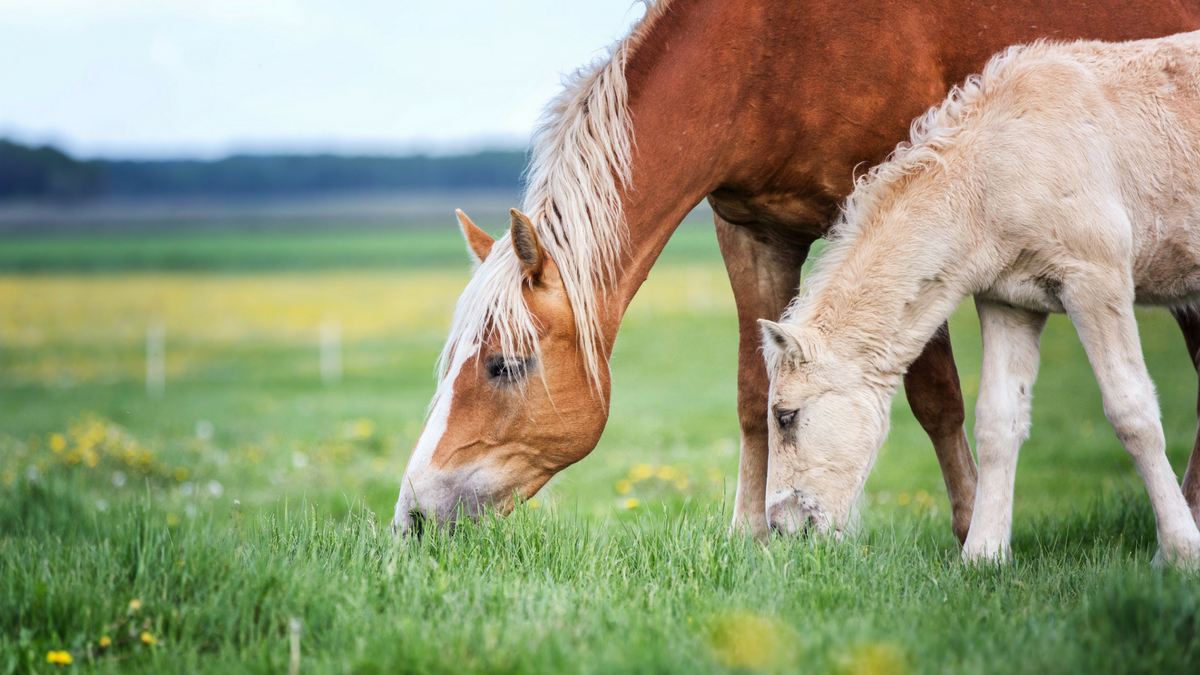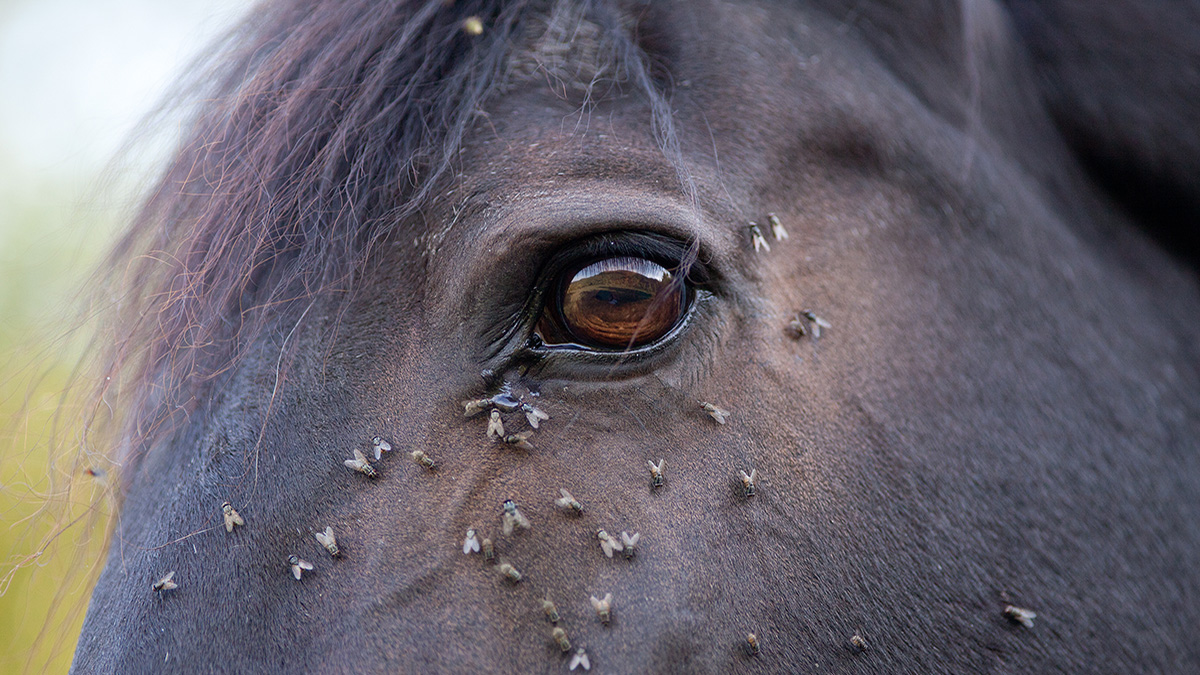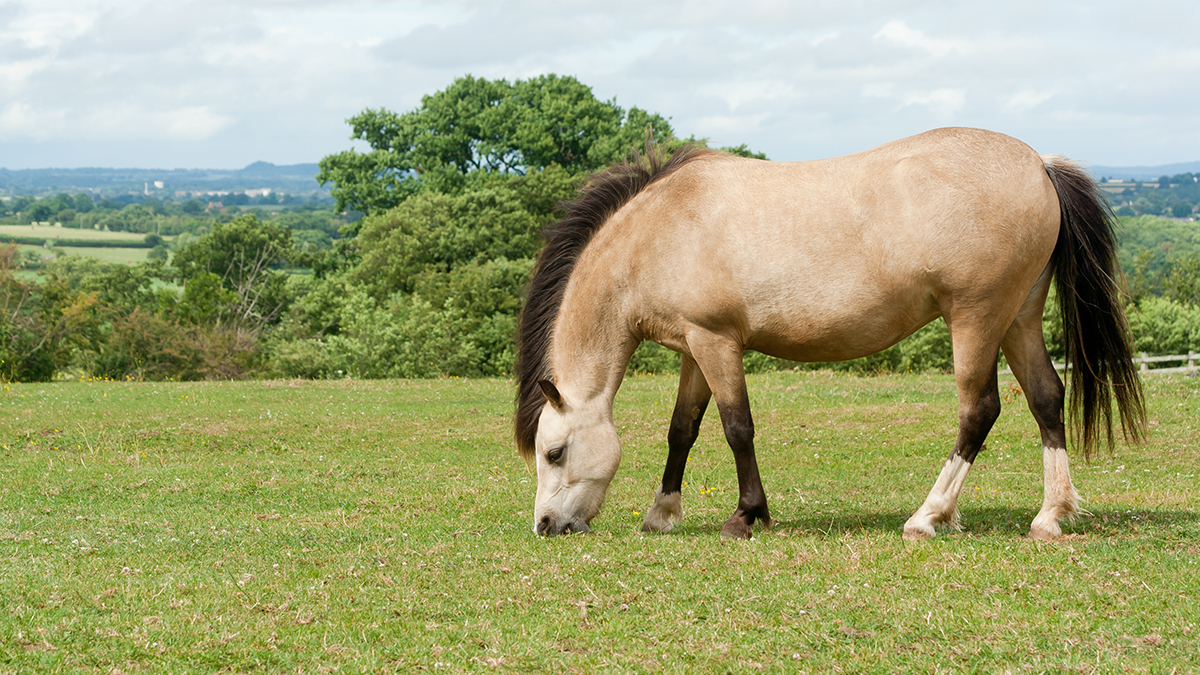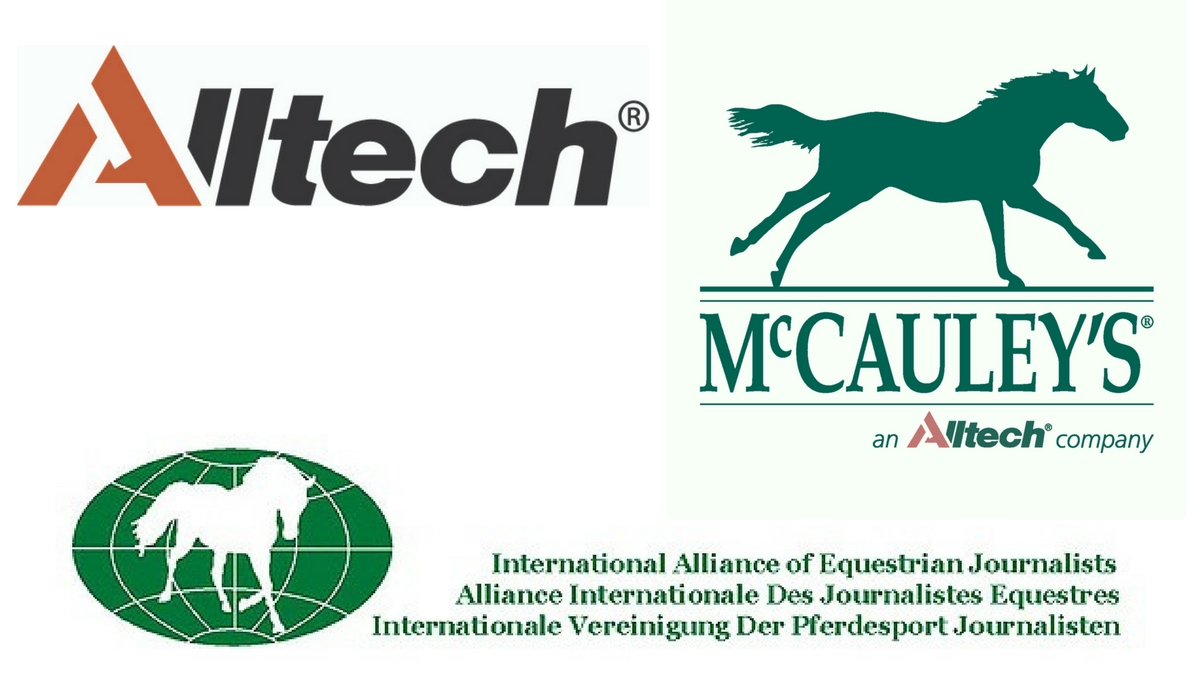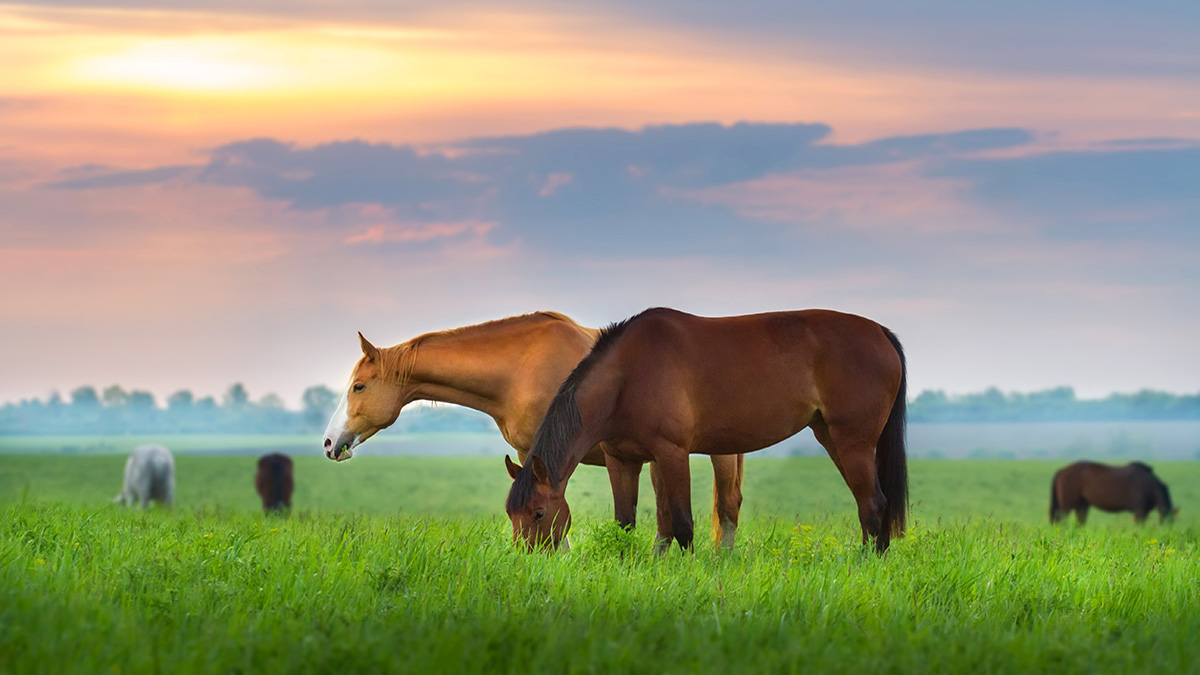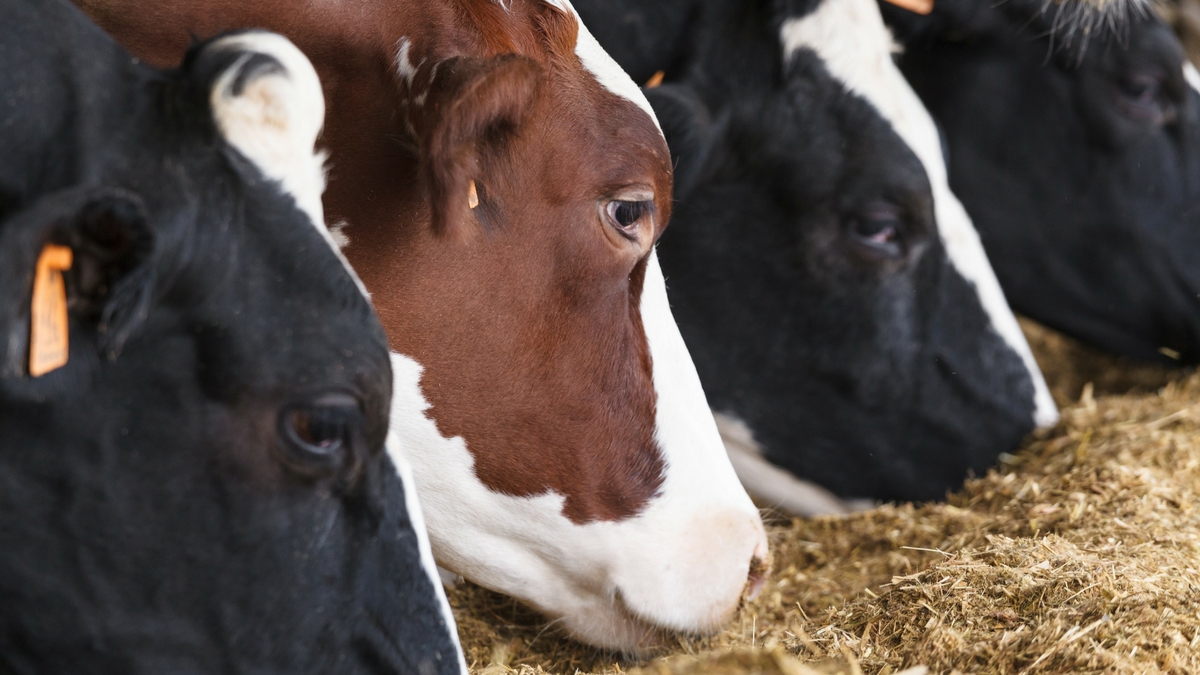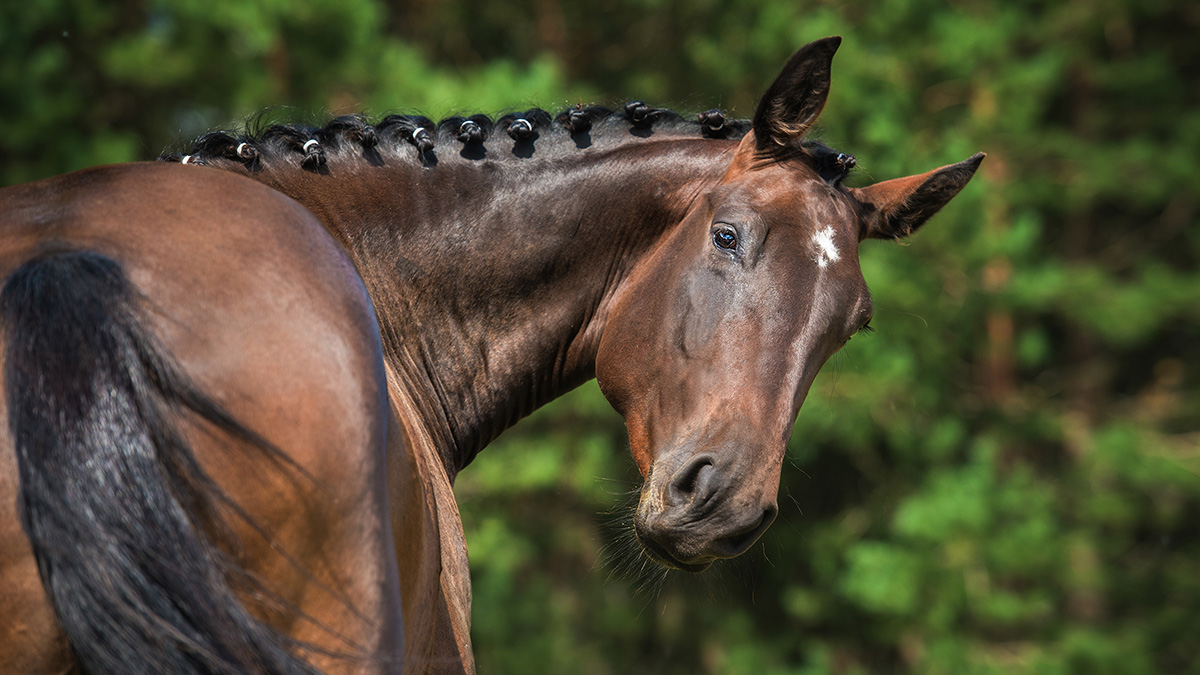Amanda Adams: Age and grace: Caring for the senior horse
The following is an edited transcript of Nicole Erwin's interview with Dr. Amanda Adams, an associate professor at the Gluck Equine Research Center at the University of Kentucky. Click below to hear the full audio:
Nicole: Senior horses make up a large majority of the hobby horse population. Like humans, they have special dietary requirements for the support of healthy aging. How should you feed your senior horse? I'm talking with Dr. Amanda Adams, an associate professor at the Gluck Equine Research Center at the University of Kentucky. Welcome.
Amanda: Thank you. It's great to be joining you here.
Nicole: With more than 10 years of experience in the equine health industry, you focus on the immune system of the geriatric horse. Can you talk to me a little bit about what moved you in that direction?
Amanda: Yeah, sure. I guess from an early age, I had an interest in and studied the immune function or immune system of the horse. In my Ph.D. program, my focus was the impact of old age on these immune responses. After the Ph.D. program, I stayed on for a post-doctorate and continued my research program with the geriatric horse and kind of expounded upon that.
We don't just look at how age affects immune responses in these horses, but we're also investigating how senior horses are affected by endocrine diseases and, then, how we can modulate both of these through nutrition. How can we support the immune system through nutrition, and how can we regulate some of these endocrine diseases that aged horses are suffering from? I was born and raised with horses and always had an interest in horses. I think it was a natural movement to go on and make them a career, or part of my career, instead of a hobby.
Nicole: At what age does a horse enter into the geriatric bracket, or is it different for every horse?
Amanda: That's a good question. How do we define age? We can define age chronologically by the number of years that the animal may be — 15, 16, 17, 18 years of age. But more so, we're interested in the biological age of the animal. A 30-year-old may be healthier in some circumstances compared to a 25-year-old. It's really about the biological age or what's going on physiologically with that animal; it's not just a number by chronological years.
Now, we sort of classified senior horses as being over the age of 15, or in a lot of our work that we do, we consider them to be senior over the age of 20. We see a lot of those physiological changes occurring at the age 20. I tell people, "Don't forget about your 15-to-20-year-old horses.” Over in Europe and Australia, they consider senior horses to be over the age of 15.
Nicole: Why is that?
Amanda: It’s just a different population of animals, and I'm not sure actually why they chose 15 as their cut-off. But, when you look at the epidemiological studies that are trying to get demographics around how many old horses are out there, they set their cut-off at 15 years of age and older to determine the percentage of old horses in their populations.
Nicole: Easier to group things.
Amanda: Yeah, probably. That's where you start to see maybe some of the horses not being reproductively active, and sort of coming out of being sport or show horses, breeding, et cetera. But it's really not uncommon nowadays to hear of horses in their 20s still performing and breeding. [American Thoroughbred and sire] Northern Afleet is 25 years of age and still standing as a stallion. [Editor’s note: Northern Afleet was euthanized in June 2018, following an illness.] At [Kentucky-based Thoroughbred breeding farm] Taylor Made Farms, you have these Olympic horses still competing at the age of 20.
Nicole: Wow. It just varies.
Amanda: It just varies. Yeah.
Nicole: The overall health of any animal is somewhat of a holistic endeavor: colostrum — the first milk that a mare feeds her foal — to everything that can come after potentially affects the health of the animal. How much can mindful nutrition in the early stages of life prevent issues later?
Amanda: I think that's a really good question. I think there's more interest in studying that area. There has not been a lot of research in the equine industry to understand the impact of maternal influence on the health and the outcome of the foal itself as the foal ages. I can't really give you an answer to that. I would say what happens early in life may not have an overlapping effect later in life because of the way the immune system essentially develops. There's just very little research done to be able to answer that.
Nicole: What are some warning signs that a horse's immune system has started to degrade?
Amanda: If you look at the immune function in a population of senior horses over the age of 20 to 35 years of age, you see varying immune responses. It's not just this continual linear decline over time. In some horses, you may see increased sinusitis issues, abscess, hoof infections and dental abscess problems. It varies. There may not be a warning sign.
It's really good to stay up-to-date with your horse's routine vaccination schedule and routine check of fecal egg counts. The gold hallmark is that, across the board, age affects immune responses, whether we're talking about humans, dogs, cats or horses. The number one thing that happens, or the hallmark characteristic of age impacting immune responses, is a failure to respond very well to vaccination.
We've done a lot of work in that area and continue to do so to see if perhaps an aged horse might respond better to a different type or platform of vaccines. We still try to make everyone aware — especially if you're still competing, showing, trail riding — that, even though they have a reduced immune response to vaccination, that doesn't mean to just forget about vaccinating them. That just means to maintain a good vaccination schedule.
Nicole: Is that the larger portion of preventive health for horses, with vaccinations?
Amanda: Oh, absolutely. It's part of the program, for sure, along with getting an annual or biannual exam, having a dental exam, a body condition scoring and lameness evaluation. I think the biggest area that I am trying to generate more awareness of is having your horse's endocrine status evaluated.
As your senior horse starts to develop early signs of equine Cushing’s disease or Pituitary Pars Intermedia Dysfunction (PPID), or if they become insulin-dysregulated, it’s really important to look at early on in the senior years so that you know how to nutritionally manage them throughout their golden years, as we say. It’s very important in making some of those decisions.
Nicole: Do some of these indicators show that it's time to move toward a more geriatric approach to nutrition? What is that approach?
Amanda: There's not a one-size-fits-all approach. That’s kind of what I talked about today at the [ONE: The Alltech Ideas] Conference]. The “old gray mare” is not just the old gray mare. In my opinion, and having the herd of geriatric horses at the University of Kentucky, we see six different types of senior horses. It's a broad spectrum, from the hard keeper to the easy keeper, to the endocrine-diseased horse, to the horse that is susceptible to develop laminitis because they're insulin-dysregulated.
It's not a one-size-fits-all dietary program to support the geriatric horse. You really need to work with your vet to understand if your horse has been affected by any of these endocrine diseases and make sure there aren’t dental problems, then work backwards from there to design a nutritional foundation for those horses.
Nicole: Are certain breeds more likely to have endocrine issues?
Amanda: Absolutely. Especially, if we're talking about insulin dysregulation, we know that certain breeds are more predisposed, such as your Morgans, your Walkers and warmbloods. When we talk about equine Cushing's disease, that can affect any breed.
Nicole: But having that kind of knowledge as an owner can help you prepare a bit?
Amanda: Oh, absolutely. Certain breeds are predisposed to being more insulin-dysregulated or not.
Nicole: Does being able to provide the right nutrition for an aged horse increase cost significantly for owners?
Amanda: Not necessarily. It doesn't mean that, just because you have a senior horse, you need to feed them a complete feed. If the horse is maintaining body weight and doing well on an all-forage diet and, like I said, maintaining body weight, then there's really, essentially, nothing that you need to change. Just ensure you're feeding a good quality forage. If not, make sure you're balancing it with a ration balancer pellet.
If the older horse is having trouble maintaining body weight or are, on the other side of the spectrum, “thrifty,” then you might have to get into some programs that might require more costs, because more calories may equal more cost. It just depends; it's just not a one-size-fit-all approach. I think that's the message: it needs to be a very individualized, tailored program for senior horses.
Nicole: Some of your work is aimed at improving the function in redox state of the immune system. What does that involve?
Amanda: We're looking at both applied and basic science questions. Looking at the cellular level, how does age impact immune responses? How well do the immune cells proliferate in response to a pathogen? That capability is reduced with age. There's a new phenomenon called inflammaging, which is a low-grade chronic inflammatory response that occurs as we age — as cats, dogs age — and we've shown that happens in horses.
It's a low-grade inflammatory response that we see systemically. That might go hand-in-hand with the oxidative status of the animal. We're still doing quite a bit of research in that area to fully understand what that means for the aged horse.
In humans, we know that this inflammaging process contributes to a lot of our age-related diseases: osteoarthritis, maybe even Parkinson's disease, et cetera. But for the old horse, we just don't quite know yet what all of this means. We know that these things are happening, but exactly how that affects their performance and physiological status — we're still unraveling all of that.
Nicole: Is this a new area of research then?
Amanda: It really is. I think in human medicine, it's not. As we're all living longer, and our horses are living longer, there's more interest in understanding how increased longevity is impacting these responses. Then can we modulate these responses to help animals live a more successful, healthy life into their golden years.
Nicole: You're also investigating models of stress for horses. What pushed you in that direction?
Amanda: Being an immunologist is great because so many different factors impact immune responses, from old age to obesity, and the third arm of my program is investigating the impact of stress on immune responses.
It really began by looking at how weaning stress impacts immune responses in horses. Then, that has taken me down the road of looking at the impact of transportation stress and how that may impact the immune response of horses and particularly, older horses that are still going out there and showing and competing. You already have an immune-compromised animal, but then you're adding layers of stress to that. What does that do to the physiological state of the animal? I think it was sort of a natural migration to have a look at that.
Nicole: What are your hopes for owners’ understanding in geriatric horse care?
Amanda: Just don't forget about the old horse and assume that, just because you've been vaccinating them year after year after year, that they don't need to be maintained on a vaccination schedule. Definitely maintain a proper vaccination schedule and work with your vet to do that. Make sure to check fecal egg counts on older horses. We've shown that senior horses have higher fecal egg counts and may be higher shedders than younger horses. Keep them on a proper vaccination schedule based on fecal egg counts.
Then, don't over-estimate the power that nutrition may have. Basically, we are enhancing or supporting immune function with age in geriatric horses. We've done some work looking at that and showing that nutrition can actually improve immune responses to vaccination in older horses and reduce inflammation or the inflammaging response. I think those are important factors.
Also, understand what the endocrine status is of your senior horse — work with your vet on that. Make sure that you have a full understanding of whether they are affected by early-stage equine Cushing's disease or late-stage PPID, if they're insulin-dysregulated or not — that’s really going to help properly design nutritional foundations for them and, then, support them in their later years. Keep up with yearly exams. Looking at all of that is going to support healthy, successful years for the senior horse.
Nicole: What should owners look for in ingredients to help support vaccinations?
Amanda: In a couple of big studies that we did with a big feed company — we'd like to investigate a variety of different parameters, but research is costly, so we had narrowed it down to looking at certain components — and some of that work was based on what has been found in human studies as having an impact on immune responses to vaccination. We looked at omega fatty acids and then we looked at prebiotic and probiotic supplementation.
We did a couple of big trials, and we were quite surprised to see that it was prebiotic formulation that enhanced some of the immune responses that we saw and measured in some senior horses. I think it just opened the door for more studies to come that show that nutrition is quite powerful and could potentially have an impact on improving immune responses in horses.
Nicole: Dr. Amanda Adams is an associate professor at the Gluck Equine Research Center at the University of Kentucky. Thank you.
Amanda: Thank you for having me.
I want to learn more about proper nutrition for senior horses.
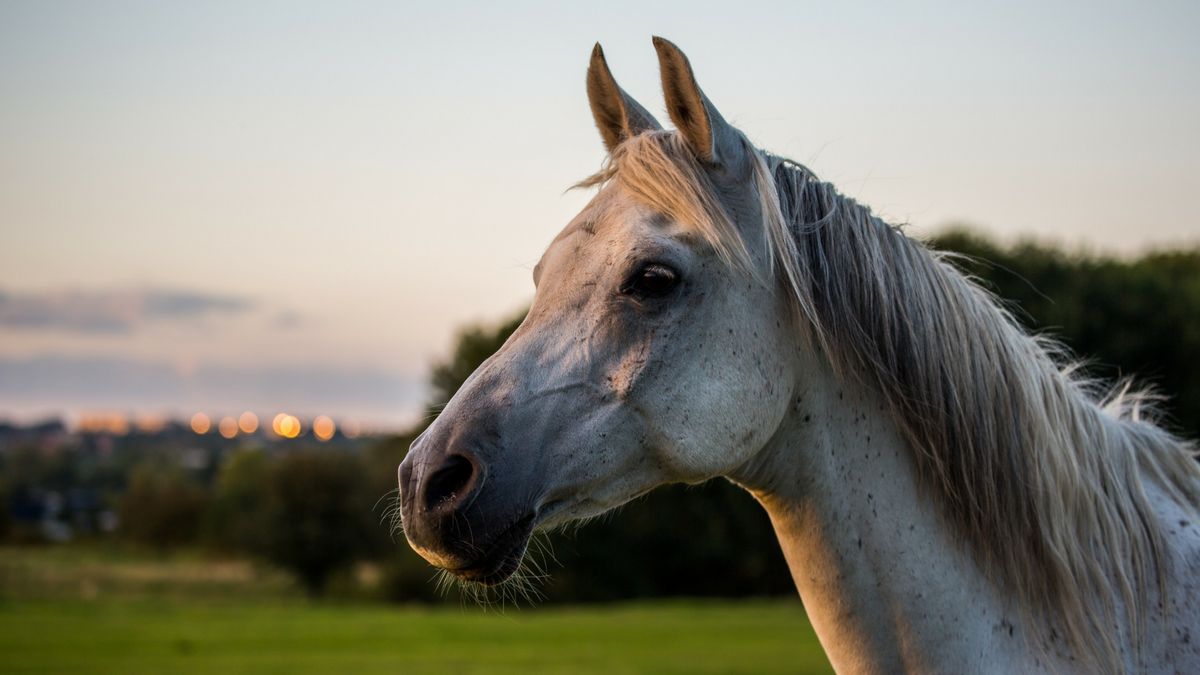
<h2><strong>Have a question or comment?</strong></h2>
<!--[if lte IE 8]>
<script charset="utf-8" type="text/javascript" src="//js.hsforms.net/forms/v2-legacy.js"></script>
<![endif]-->
<script charset="utf-8" type="text/javascript" src="//js.hsforms.net/forms/v2.js"></script>
<script>
hbspt.forms.create({
portalId: '745395',
formId: '0db1e6e4-d108-45b2-b266-6a44d9844fb5'
});
</script>
Senior horses require nutrition and care specific to their needs. An individualized program tailored to the senior horse can help aging equine friends live longer, healthier lives.













